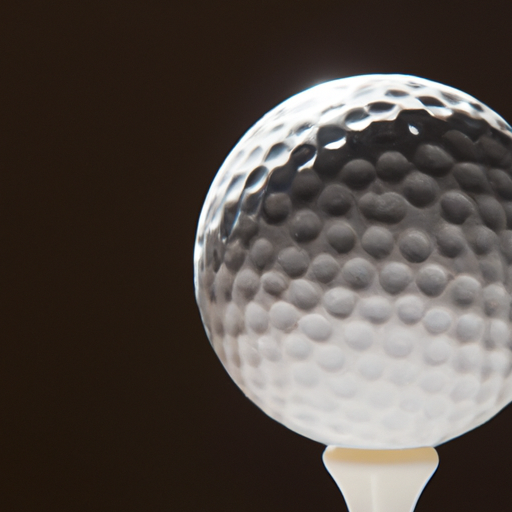We may earn money or products from the companies that may be mentioned in this post.
Have you ever wondered what makes a golf ball soft? In this article, we will dive into the fascinating world of soft golf balls and explore their unique characteristics. From their construction to the impact they have on your game, understanding the science behind these special balls can enhance your overall golfing experience. So, grab your clubs and get ready to discover the secrets of the soft golf ball!
Exploring the Characteristics of a Soft Golf Ball

Introduction to Soft Golf Balls
When it comes to golf equipment, one important consideration is the type of golf ball you use. Among the various options available, soft golf balls have gained popularity due to their unique set of characteristics. But what exactly is a soft golf ball? A soft golf ball is designed with a low compression core and a soft cover. This composition gives the ball a unique feel and performance that sets it apart from its counterparts.
Advantages of Soft Golf Balls
Soft golf balls offer several advantages that make them a popular choice among golfers of all skill levels. One of the main advantages is the enhanced feel they provide. The soft cover of the ball allows players to sense the impact and control of their shots more effectively. This improved feel can greatly impact a golfer’s ability to judge distance and make precise shots.
Another advantage of soft golf balls is the increased spin rates they offer. The soft cover material combined with the low compression core allows for more spin on shots. This added spin can be particularly beneficial when it comes to approach shots, as it helps the ball grip the green and stop quickly, ultimately resulting in better control and closer proximity to the hole.
Disadvantages of Soft Golf Balls
While soft golf balls have their fair share of advantages, they also come with a few disadvantages. One disadvantage is their tendency to generate less distance compared to harder golf balls. Due to the low compression nature of soft golf balls, the energy transfer at impact is not as efficient, resulting in slightly reduced distance off the tee. This can be a significant factor for golfers who prioritize maximum distance over other aspects of their game.
Another drawback of soft golf balls is their relatively lower durability. The soft cover material, while providing a great feel, is more prone to scuffs, cuts, and wear. This means that soft golf balls may not last as long as their harder counterparts and may require more frequent replacement. However, for golfers who prioritize feel and control over durability, this trade-off may be worth it.

Understanding Compression
To fully comprehend the characteristics of a soft golf ball, it’s essential to understand the concept of compression. Compression refers to the density and hardness of a golf ball’s core. Soft golf balls have a low compression rating, typically ranging from 40 to 80. This low compression allows the ball to deform upon impact, leading to a greater energy transfer and enhanced feel. Understanding compression is key when deciding whether a soft golf ball suits your playing style and preferences.
The Impact on Distance
As mentioned earlier, one of the disadvantages of soft golf balls is their potential to generate less distance compared to harder golf balls. This is mainly due to the lower compression of soft golf balls, which leads to a lower initial velocity off the clubface. However, it’s important to note that while soft golf balls may sacrifice some distance, they often compensate for it with increased accuracy and feel. Ultimately, the impact on distance will depend on your swing speed, skill level, and personal preferences.
Feel and Control
One of the standout characteristics of soft golf balls is their exceptional feel and control. The soft cover allows golfers to have a more intuitive sense of the impact and feedback from their shots. This heightened feel can greatly assist in fine-tuning shots for improved accuracy and control. Whether you’re hitting a full swing or executing delicate shots around the green, the softness of the ball can give you a better connection with your game.
Spin Rates
Spin rates play a significant role in determining a golfer’s ability to control their shots. Soft golf balls are renowned for their ability to generate increased spin rates. The soft cover and low compression core work in harmony to produce more spin upon contact with the clubface. This added spin can be particularly advantageous when trying to hold the green on approach shots or execute precise shots around hazards. It’s worth noting that increased spin rates require proper technique and skill to fully utilize their benefits.
Launch Angle
Another aspect influenced by the characteristics of a soft golf ball is the launch angle. Soft golf balls tend to launch higher off the clubface compared to harder golf balls. This higher launch angle can be advantageous when trying to achieve maximum distance. Additionally, a higher launch can help golfers navigate challenging terrain and obstacles on the course. However, it’s essential to consider individual launch characteristics and adjust your technique accordingly to optimize distance and accuracy with a soft golf ball.
Durability
Although soft golf balls offer exceptional feel and control, their softer cover material makes them more susceptible to wear and tear. The trade-off for the improved performance characteristics of soft golf balls is their relatively lower durability. The soft cover is more prone to scuffs and cuts, particularly when striking harder surfaces such as cart paths or trees. With proper care and regular inspection, golfers can help prolong the lifespan of their soft golf balls.
Choosing the Right Soft Golf Ball
With a wide variety of soft golf balls available in the market, it’s important to choose the right one for your game. Factors to consider include your swing speed, skill level, desired performance characteristics, and personal preferences. It may be beneficial to test different models and brands to determine which soft golf ball aligns best with your individual requirements. Additionally, seeking advice from a golf professional or visiting a golf retailer can provide valuable insights and recommendations tailored to your game.
In conclusion, soft golf balls offer unique characteristics that appeal to golfers seeking enhanced feel, control, and spin rates. However, it’s important to weigh the advantages and disadvantages before making a decision. By understanding compression, impact on distance, feel and control, spin rates, launch angle, durability, and selecting the right soft golf ball, you can optimize your performance and enjoyment on the golf course. So, take the time to explore the world of soft golf balls and find the perfect fit for your game!
